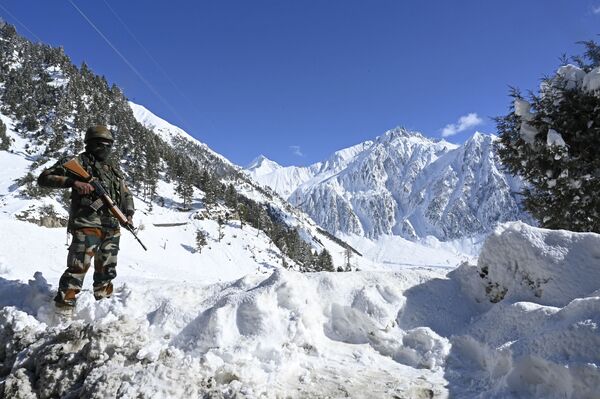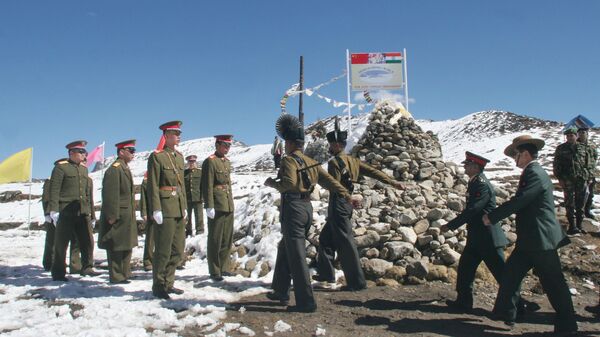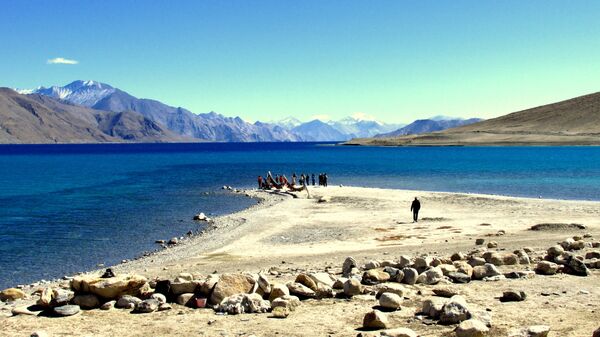A "minor" face-off between the Indian Army and China’s People’s Liberation Army (PLA) took place at Naku La of Sikkim sector five days ago, the Indian Army has confirmed. Government sources in New Delhi claim that 20 PLA troopers and four soldiers on the Indian side have been injured in the stand-off that erupted after the Chinese side allegedly tried to intrude into the Indian territory.
Actions Don’t Match Words
Since the border stand-off erupted last April over infrastructure development along the Line of Actual Control (LAC) — a loosely demarcated boundary line that separates the Indian-controlled area from the Chinese-controlled region — the two countries have held nine rounds of commander-level talks in addition to diplomatic and ministerial level meetings during the past ten months. The meetings have produced no concrete results with the two sides, so far, being able to cobble-up only a loose consensus to abide by the boundary agreements to ease the persisting tensions.

The two sides continue to reinforce troops along the border even after last September’s commander-level meeting ended on a positive note.
"Both sides agreed to earnestly implement the important consensus reached by the leaders of the two countries, strengthen communication on the ground, avoid misunderstandings and misjudgements, stop sending more troops to the front line, refrain from unilaterally changing the situation on the ground, and avoid taking any actions that may complicate the situation,” the joint statement read.
However, the Himalayan neighbours seem to be in no mood to give up on the building up of troops as evident from last week’s clash at Naku La. Unverified satellite images by private companies show that despite the deep winter chill, troops, tanks and armoured personnel carriers on both sides are closer to each other than they have been in the past four months.
Satellite imagery of the areas where this activity has been recorded puts the units roughly 36 KM east of #DBO airstrip pic.twitter.com/7iLfSnmF8U
— d-atis☠️ (@detresfa_) January 12, 2021
Here is what it looks like from above, note the sat image is from earlier in November 2020 when the same equipment was positioned there pic.twitter.com/AjiKVhj6QS
— d-atis☠️ (@detresfa_) January 10, 2021
"If they can be aggressive, we can also be aggressive. We are fully prepared," Indian Air Force Chief RKS Bhadauria’s stated.
Reasons for Ongoing Stand-off
Last April's scuffle, which, according to the Indian side, was triggered by Chinese transgression, was not the first between the two Asian giants as they have continuously reported hundreds of transgressions along the LAC every year.
New Delhi considers the LAC to be 3,488 km long, while Beijing believes it to be only around 2,000 km. The middle sector — Uttarakhand, Himachal Pradesh — is the least controversial, with the two countries inching closer to a boundary agreement in 2018. The process, however, got stalled after India declared contentious Ladakh as a separate Union Territory.
Apart from Ladakh, India and China remain at odds over another area which India recognises as Arunachal Pradesh and China claims it as part of South Tibet.
The border dispute stems from two letters written by the then- Premier of the People's Republic of China Zhou Enlai to Indian Prime Minister Jawaharlal Nehru in 1959. Zhou, in his letter, claimed that the LAC consisted of “the so-called McMahon Line in the east and the line up to which each side exercises actual control in the west”.
Zhou clarified the concept of LAC again after the 1962 Sino-India war in another letter to Nehru: “To put it concretely, in the eastern sector it coincides in the main with the so-called McMahon Line, and in the western and middle sectors it coincides in the main with the traditional customary line which has consistently been pointed out by China”.
China claimed that after the 1962 war, its troops had withdrawn 20 km behind the LAC of November 1959. China views the 1959 line of LAC as the real boundary, while India rejects this claim.
In August 2019, the Narendra Modi government split Jammu and Kashmir into two union territories and declared Ladakh — the western sector of the LAC — a separate territory. This did not go down well with Beijing that reacted sharply to New Delhi’s move, stating that India has continued to undermine China’s territorial sovereignty and that such a “practice is unacceptable”.
A peeved India promptly chose to set aside the Chinese objections, saying its clearance of the law for the formation of the “Union Territory of Ladakh” is an “internal matter concerning the territory of India”.
Last April, when the ongoing stand-off broke out, New Delhi accused Beijing of erecting permanent infrastructure on the Indian side of the LAC while China came forward with similar allegations against India.
Indian media claim China has intruded about 8 km on the north bank of Pangong Tso — a lake shared between the two countries and demarcated on maps as ‘fingers’. Indian troops have been restricted from patrolling beyond Finger 4 since April after China deployed troops there. Traditionally, India used to patrol up to Finger 8, where it claims the LAC is. However, China lays claim up to Finger 4 and dominates the area.
What Lies Ahead?
The hand-to-hand clash at Naku La — a settled boundary on 20 Januaryb sends out some serious indication that can be gauged through two recent articles by Hu Shisheng, Director of the Institute for South Asian Studies at the China Institutes of Contemporary International Relations (CICIR).
The CICIR comes directly under the Ministry of State Security (MoSS), China’s external intelligence establishment.
Hu Shisheng assessed that the contest over the border will move from “reconciliation through dialogues” to a new stage featuring “contention for control with real power”, which will inevitably lead to border clashes.
Another article on a PLA-maintained website on 24 December claimed the “Indian Army is waiting for an opportunity to cause trouble next year”.
“China and India have prepared for a long-term confrontation in the disputed border area” and “it is expected to continue for several years”.






